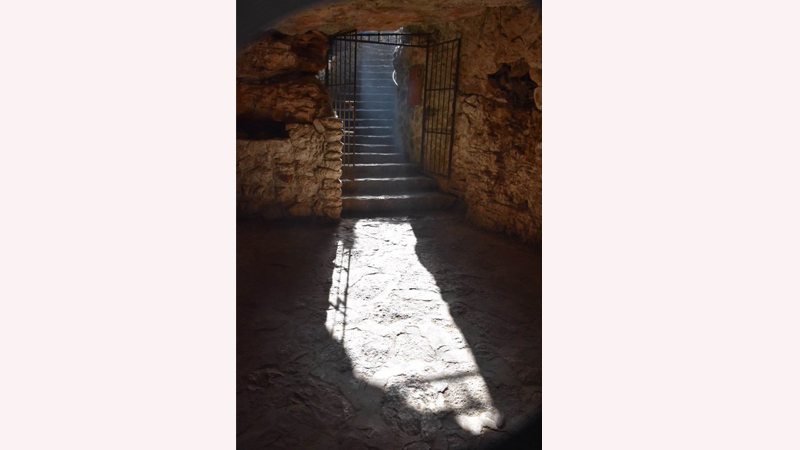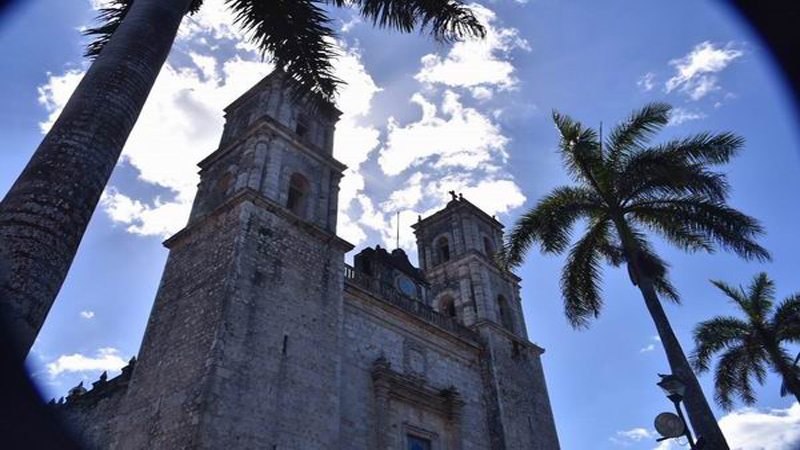 Until I saw Mel Gibson’s historical-fictional film, ‘Apocalypto’, I knew next to nothing about the lost civilisation of the Maya. The movie, which features a chase from beginning to end, and which kept me at the edge of the seat the whole time, provided some keen insights into the Maya culture. But the human sacrifice on top of pyramids by the high priest really in particular got my attention. They were grisly beyond words.
Until I saw Mel Gibson’s historical-fictional film, ‘Apocalypto’, I knew next to nothing about the lost civilisation of the Maya. The movie, which features a chase from beginning to end, and which kept me at the edge of the seat the whole time, provided some keen insights into the Maya culture. But the human sacrifice on top of pyramids by the high priest really in particular got my attention. They were grisly beyond words.
Later, I read about a debate at UCLA between Mel Gibson and a professor of anthropology in which the latter had questioned the historical accuracy of the film and upset the former to the point that he asked the professor to make her own movie, at which point she got up and walked off the stage. Wow!
So there was a lot more to how the movie had presented human sacrifices than I had realised. As I dug deeper into the issue, I learned that while human sacrifices were indeed carried out by the Maya, the version shown in the movie belonged to the Aztecs and not to the Maya.
We decided to visit Cancan in the Yucatan peninsula to check this all out in person. Our hotel was located on the beach. From our window, we had a limitless view of the Caribbean Sea in colours that ranged from deep blue to light green to white foam.
The sound of the waves crashing on the beach was relaxing and walking barefoot on the sands had never felt so good. We forgot our everyday worries and just drifted away to another level of consciousness
The sound of the waves crashing on the beach was relaxing and walking barefoot on the sands had never felt so good. We forgot our everyday worries and just drifted away to another level of consciousness.
In the days that followed, we discovered that several different cuisines were served in the restaurants located next to a lagoon. We tried out the Indian, the Italian, and the Thai. They were all very good but the Thai was superb.
The delicacies were served to us in a thatched cabin overlooking the water. As the sun set over the water, we were transported back to Thailand. After dinner, we walked past the adjacent mall. We witnessed a world class shopping frenzy and had no desire to become part of it.
But we had really come to check out the Maya. So we booked a couple of bus tours and toured three ancient cities: Chichen Itza (regarded as a modern wonder of the world), Coda (site of the early pyramids) and Tulum (the only site next where the temples overlook the sea).
What we discovered was nothing short of amazing. The biggest one at Chichen Itza, called El Castillo (the castle), was in such good shape that it looked like it had been built yesterday – even though it was built in 900 AD.
At El Castillo, each of the four sides side had 91 steps, and combined with the platform on top, that makes 365 – one for each day of the year. The edifice is 75 feet tall. On the spring and autumnal equinoxes, at a certain hour of the day, a long shadow falls on the north staircase, evoking the image of the plumed serpent god coming down the slope.
The pyramids were of course smaller than the ones at Giza in Egypt. The great pyramid is six times taller than El Castillo. While the Mayan pyramids were not built as tombs for their kings, they were designed to facilitate astronomical research and to identify the changing seasons.
Chichen Itza also had a temple of a thousand columns, an observatory, and a large ball court with a large stone loop on either side. Perhaps points were scored every time the ball was shot through the loop. There were also platforms for Venus, Eagle and Jaguars, and Human Skulls.
Under the open sky, the heat and the humidity began to beat down upon us even though it was the month of February. It hit you, regardless of how you dressed and how much water you consumed.
With the Maya long gone, the omnipresent iguana seemed to rule the pyramids. The males had a ridge over their neck and kept nodding their heads up and down for no apparent reason. The females, diminutive by comparison, did not respond by nodding their heads.
There are no rivers in the Yucatan Peninsula but a lot of aquifers, and a fair number of sink holes. The soil is made of limestone, which used to be corral under the ocean millions of years ago.
We were told the Maya did not build cemeteries. They entombed their dead in their homes and curled up the bodies into a fetal position so they would be ready to be born into their next life.
Archeological research has shown that the Maya were one of three civilisations that invented paper, along with the Chinese and Egyptian. And they were one of two civilisations that invented the number zero, along with the Indian. Interestingly, the number 20 seemed to appear in a number of places. It was derived by summing the digits on two pairs of hands and the toes on two pair of feet.
We learned that the Maya had developed an accurate calendar which compares favorably with NASA’s. Without computers and without telescopes, the Maya had developed such a deep knowledge of astronomy. They had brilliant minds and some have rightfully called them the Greeks of Central America.
Kukulcan, the winged serpent god, was a major figure in their religion. He seems to have been important in the art and religions of all of Mesoamerica for close to two millennia. The Aztecs called him Quetzalcoatl, or feathered serpent. The main boulevard in Cancun is named after him and Cancun itself means Snake’s Nest. Many of the kings were called Snake Kings.
The sinkhole had a religious connotation, since it provided a passage to the underworld which according to the Maya was the haven of the dead. The Mayan concepts of heaven and hell were multilayered, as in many other religions.
The human victims who were sacrificed had their hearts cut out by a knife made of obsidian volcanic rock. The bodies were thrown into the sinkholes so they could meet the gods and continue on with their next life. Public decapitation, often of the captain of the winning team, was also practiced during sporting events on the ball courts.
 New discoveries about the Maya continue to be made with every passing day. The latest have been made in Guatemala using a technique called LiDAR. Archaeologists opine that more than 90 per cent of the civilisation is waiting to be discovered.
New discoveries about the Maya continue to be made with every passing day. The latest have been made in Guatemala using a technique called LiDAR. Archaeologists opine that more than 90 per cent of the civilisation is waiting to be discovered.
The Maya civilisation had collapsed by the time the conquistadors arrived from Spain, due to internecine warfare, the loss trade routes, drought and disease. As the historian Will Durant astutely observed,
“A great civilisation is not conquered
from without until it has destroyed
itself from within.”
Our trip was just an introduction to Mesoamerica. Touring the capital of the Aztecs north of Mexico City, the number one tourist spot in the country, is next on the list of places to visit.
The author has toured 36 countries and can be reached at ahmadfaruqui@gmail.com
Published in Daily Times, February 24th 2018.